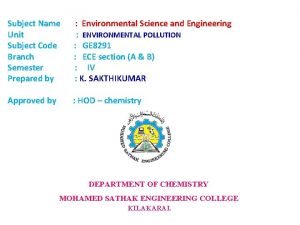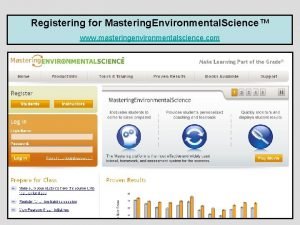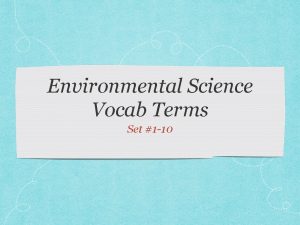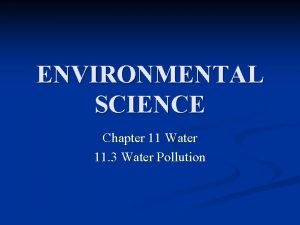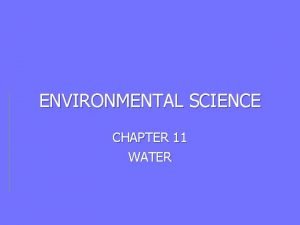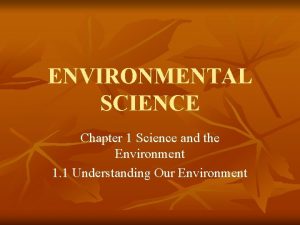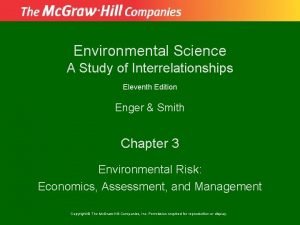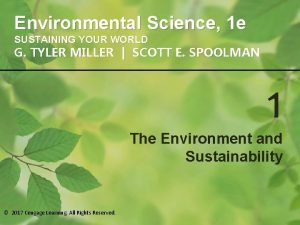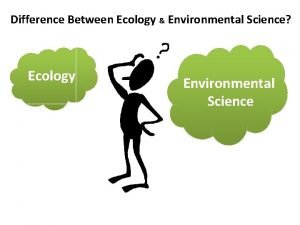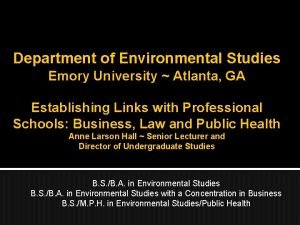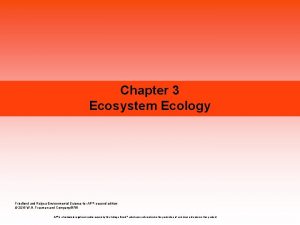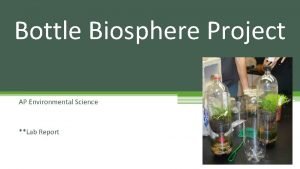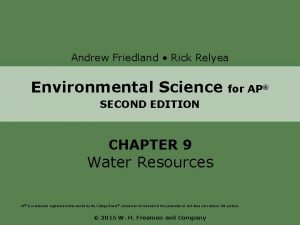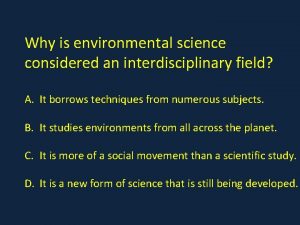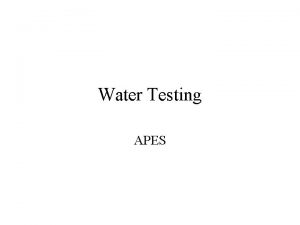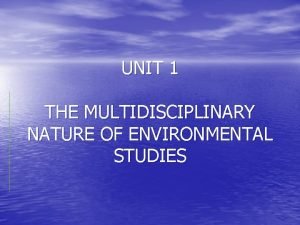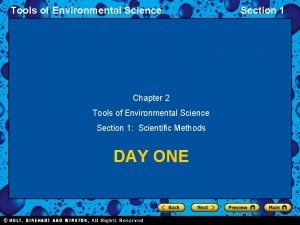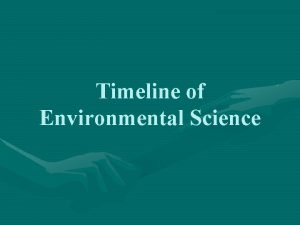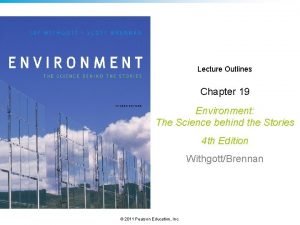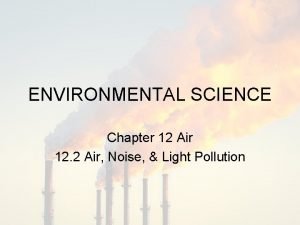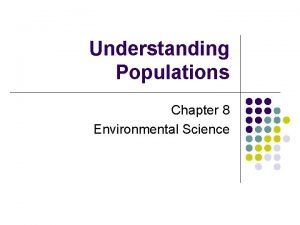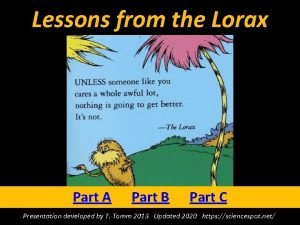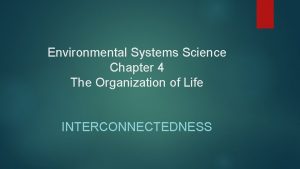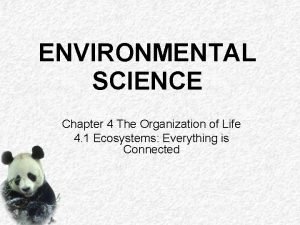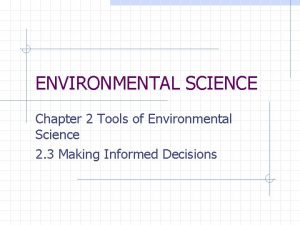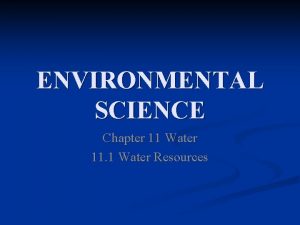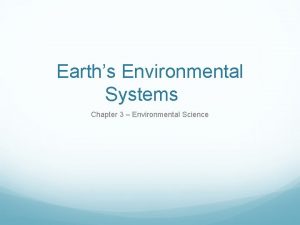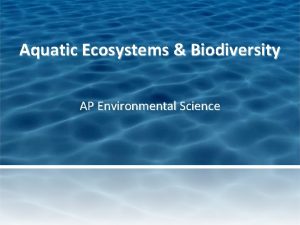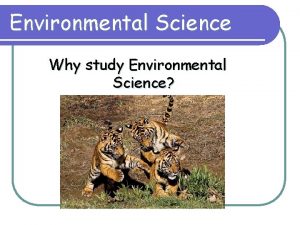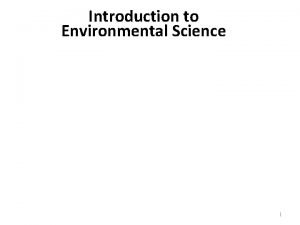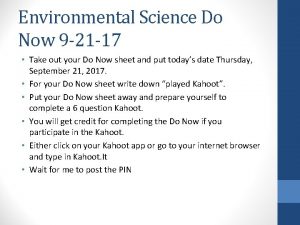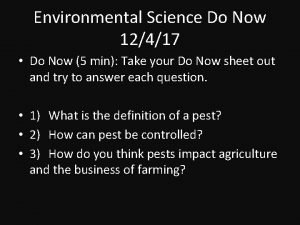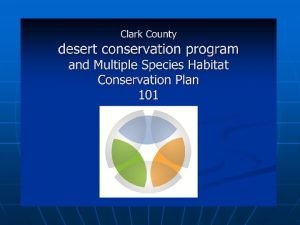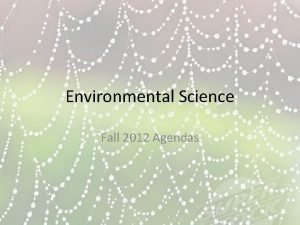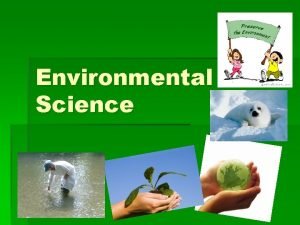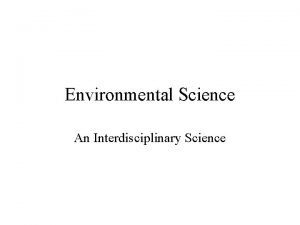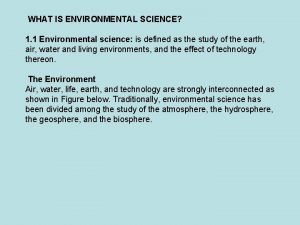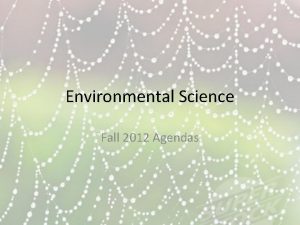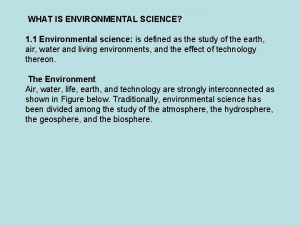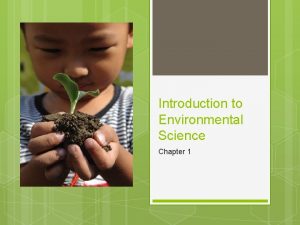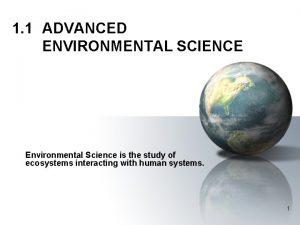Environmental Science Do Now 9 28 17 Take













































- Slides: 45

Environmental Science Do Now 9 -28 -17 Take your Do Now sheet out, your notes on evolution and complete. § Who was the “Father of Modern Evolution”? § During what century did the answer to question #1 § § § live? What is the name of the islands the scientist visited? How old was the scientist when he visited these islands? Name any three types of organisms that live on these islands? How were the islands formed? Regents Biology

Environmental Science Do Now 9 -28 -17 KEY § Who was the “Father of Modern Evolution”? Charles § § Darwin During what century did the answer to question #1 live? 19 th century What is the name of the islands the scientist visited? How old was the scientist when he visited these islands? Galapagos Islands…Darwin visited the islands when he was 22 years old. Name any three types of organisms that live on these islands? Finches, Tortoises, and Lizards How were the islands formed? From underwater volcanic eruptions Regents Biology

S/O’s & Reminders of Important Dates § Back to School Night was a success! Congrats to § § Breyawna Simmons, Dauisha Carlton, Nickolas Burney, William Portillo, Elijah Dorsey, Angel Franklin, and Keena’ Henderson for earning a bonus test grade of 100% Henderson for coming out to this event! 1 st Quarter Progress report grades close on Wednesday, October 4, 2017. If you are failing a class, you have 6 more days to improve your grade before progress report grades are finalized! Regents Biology

Tonight’s Homework § Create a colorful labeled picture that § § § explains the process by which bacteria may become antibiotic resistant OR how a pest becomes pesticide-resistant. Colorful and neat – 100 points Scientifically sound and correct explanation – 100 points Labeled the drawing – 100 points Regents Biology

Objective § Students will know the mechanism of § evolution through natural selection by taking notes, completing a worksheet on natural selection and answering exit ticket questions. Mastery: 70% or better on the natural selection worksheet Regents Biology

Engage § What is MRSA? Source: https: //www. youtube. com/watch? v=LYjj 9 1_29 aw § What is pesticide-resistance? Source: https: //www. youtube. com/watch? v=xcnh K 9 j 2 ty. Q Regents Biology

New Vocabulary Words § Evolution § Adaptation § Natural selection § Artificial selection § Mutation § Survival of the Fittest § Reproduction Regents Biology

Explore § Students will play the Peppered Moth Simulation § on their cell phones. The peppered moth simulation shows how humans indirectly caused a shift in the moth population during the Industrial Revolution § Source: https: //www. biologycorner. com/worksheets/pepp eredmoth. html Regents Biology

Evidence for Evolution through Natural Selection PPT (students will copy the notes) EXPLAIN Regents Biology

Evidence for Evolution by Natural Selection Hunting for evolution clues… Elementary, my dear, Darwin! Regents Biology 2006 -2007

Evidence supporting evolution § Fossil record COPY THESE NOTES! u shows change over time COPY THESE NOTES! § Anatomical record u comparing body structures § homology & vestigial structures § embryology & development § Molecular record u comparing protein & DNA sequences § Artificial selection human caused evolution u Regents Biology

Fossil record COPY THESE NOTES! § Layers of rock contain fossils u new layers cover older ones § creates a record over time u fossils show a series of organisms have lived on Earth § over a long period of time Regents Biology

Fossils tell a story… the Earth is old Life on Earth has changed Regents Biology

COPY THESE NOTES! Evolution of birds Today’s organisms descended from ancestral species Fossil of Archaeopteryx § lived about 150 mya § links reptiles & birds Regents Biology

We found the fossil — no joke! Land Mammal ? e h t e ar ? e e r Whe mediat r inte sils? ? fos Complete series of transitional fossils Someone’s idea of a joke! Regents Biology But the joke’s on them!! Ocean Mammal ?

Evolution from sea to land § 2006 fossil discovery of early tetrapod u 4 limbs § Missing link from sea to land animals Regents Biology

COPY THESE NOTES! Anatomical record Animals with different structures on the surface But when you look under the skin… It tells an evolutionary story of common ancestors Regents Biology

Compare the bones COPY THESE NOTES! § The same bones under the skin u limbs that perform different functions are built from the same bones How could these very different animals have the same bones? Regents Biology

COPY THESE NOTES! Homologous structures § Structures that come from the same origin § homo- = same § -logous = information § Forelimbs of human, cats, whales, & bats u same structure § on the inside same development in embryo u different functions u § on the outside u evidence of common ancestor Regents Biology

But don’t be fooled by these… § Analogous structures u look similar § on the outside same function u different structure & development u How is a bird like a bug? § on the inside different origin u no evolutionary relationship u Solving a similar problem with a similar solution Regents Biology

COPY THESE NOTES! Analogous structures § Dolphins: aquatic mammal § Fish: aquatic vertebrate both adapted to life in the sea u not closely related u Watch the tail! Regents Biology

COPY THESE NOTES! Convergent evolution § 3 groups with wings u Does this mean they have a recent common ancestor? They just came up with the NO! same answer! Regents Biology Flight evolved 3 separate times — evolving similar solutions to similar “problems”

Convergent evolution led to mimicry § Why do these pairs look so similar? Monarch male Viceroy male poisonous edible Which is the moth vs. the bee? Which is the fly vs. the bee? Regents Biology fly bee moth bee

COPY THESE NOTES! Vestigial organs § Hind leg bones on whale fossils Why would whales have pelvis & leg bones if they were always sea creatures? Because they used to walk on land! Regents Biology

Comparative embryology § Development of embryo tells an evolutionary story u similar structures during development all vertebrate embryos have a “gill pouch” at one stage of development Regents Biology

3. Molecular record § Comparing DNA & protein structure u everyone uses the same genetic code! § DNA Human Macaque Dog Bird Frog Lamprey 8 32 45 67 125 § compare common genes § compare common proteins number of amino acids different from human hemoglobin 0 10 20 30 40 50 60 70 80 90 100 110 120 Regents Biology

Building “family” trees Closely related species are branches on the tree — coming from a common ancestor Regents Biology

4. Artificial selection § How do we know natural selection can change a population? we can recreate a similar process u “evolution by human selection” “descendants” of wild mustard u Regents Biology

Selective Breeding Humans create the change over time Regents Biology “descendants” of the wolf

Artificial Selection …and the examples keep coming! I liked breeding pigeons! Regents Biology

Artificial Selection gone bad! § Unexpected consequences of artificial selection Pesticide resistance Antibiotic resistance Regents Biology

Insecticide resistance § Spray the field, but… u insecticide didn’t kill all individuals § variation resistant survivors reproduce u resistance is inherited u insecticide becomes less & less effective u Regents Biology

Regents Biology

Any Questions? ? Regents Biology 2006 -2007

Natural Selection of Strawfish § How does natural selection affect genes? § How do genes affect evolution? Regents Biology 2006 -2007

1. No Predator Preferences FISH blue ALLELES green yellow blue yellow Gen. 1 25% 50% 50% Gen. 4 27% 55% 18% 55% 45% No selection force in one specific direction. No clear pattern of change. Regents Biology

2. Predator Prefers BLUE FISH blue ALLELES green yellow blue yellow Gen. 1 25% 50% 50% Gen. 4 13% 50% 37% 38% 62% Selection against blue. Fewer blue fish and fewer blue alleles. Regents Biology

3. Predator Prefers GREEN FISH blue ALLELES green yellow blue yellow Gen. 1 25% 50% 50% Gen. 4 36% 28% 36% 50% Selection against green. Fewer green fish but same variation in alleles. Regents Biology

4. GREEN is Camouflaged FISH blue ALLELES green yellow blue yellow Gen. 1 25% 50% 50% Gen. 4 20% 60% 20% 50% Selection against blue & yellow. More green fish but same variation in alleles. Regents Biology

Parallel Evolution Niche Placental Mammals Burrower not closely related Mole Anteater Nocturnal insectivore Climber marsupial mammal Glider Marsupial mole Numbat Marsupial mouse placental mammal Spotted cuscus Lemur Ocelot Sugar glider Tasmanian cat filling similar roles in nature, Wolf so have similar adaptations Tasmanian “wolf” Chasing predator Regents Biology Mouse Flying squirrel Stalking predator Australian Marsupials

Vestigial organs § Structures on modern animals that have no function remains of structures that were functional in ancestors u evidence of change over time u § some snakes & whales have pelvis bones & leg bones of walking ancestors § eyes on blind cave fish § human tail bone Regents Biology

Extend § Chapter on Evolution from the HRW Environmental Science textbook. u Complete the worksheet that accompanies the reading. § Goal: 455/650 (70%) of the available points or better Regents Biology

Evaluation Exit Ticket Question: § What are the steps involved in evolution through selection? § What does the phrase “Survival of the Fittest” mean with respect to the evolution? § What does the term adaptation mean? § Explain why an adaptations are only as beneficial as the environment a species lives in? Regents Biology

Seed Germination Lab – Day #5 § Today you will CONTINUE: Record any observations about your seeds (For example: no seed germination, dry, damp, smelly, brown, wet…etc. ). Be observant! u Your and your partner will water your seeds, if needed. Be specific, record your steps. u § For example: Added 10 m. L of vinegar solution to the Petri plate labeled “vinegar” and 10 m. L of water to the Petri plate labeled “water”. Then, sit the plates back in the windowsill. Regents Biology 44 copyright cmassengale

Seed Germination Lab/Lab Report § Each pair of students must earn, at least, 10/15 points on their lab report (Due: Monday, October 2, 2017) § SKILL MASTERY LEVELS: u u u 90 – 100% (13 -15 points): SKILLS EXCEPTIONALLY MASTERED 80 – 89% (11 - 12 points): SKILLS WELL MASTERED 70 – 79% (10 points): SKILLS ADEQUATELY MASTERED 60 – 69% (9 points): SKILLS BASICALLY MASTERED <60% (<9 points): SKILLS NOT MASTERED Regents Biology
 Why environmental science is an interdisciplinary science
Why environmental science is an interdisciplinary science Now i see it now you don't
Now i see it now you don't Nina's favorite subject is science
Nina's favorite subject is science Take a bus or take a train
Take a bus or take a train Mh 605
Mh 605 Ap environmental science exam pass rate
Ap environmental science exam pass rate Tragedy of the commons easter island
Tragedy of the commons easter island Environmental science and engineering subject code
Environmental science and engineering subject code Mastering environmental science
Mastering environmental science About environmental issues
About environmental issues Pedineo review
Pedineo review Environmental science final exam review
Environmental science final exam review Wastewater sludge
Wastewater sludge Chapter 11 review environmental science
Chapter 11 review environmental science Environmental science chapter 1
Environmental science chapter 1 Tragedy of commons environmental science
Tragedy of commons environmental science Ipat model of environmental impact
Ipat model of environmental impact Difference of ecology and environmental science
Difference of ecology and environmental science Emory environmental science
Emory environmental science Npp environmental science
Npp environmental science Bottle biosphere
Bottle biosphere Environmental science chapter 13 review
Environmental science chapter 13 review Environmental jeopardy
Environmental jeopardy Friedland and relyea environmental science
Friedland and relyea environmental science A science is considered interdisciplinary when weegy
A science is considered interdisciplinary when weegy Apes lab
Apes lab Multidisciplinary nature of environmental studies
Multidisciplinary nature of environmental studies Environmental science chapter 2 review answers
Environmental science chapter 2 review answers Environmental science timeline
Environmental science timeline National 5 environmental science
National 5 environmental science Environmental chemistry science olympiad
Environmental chemistry science olympiad Chapter 19 environmental science
Chapter 19 environmental science Chapter 2 economics and environmental policy
Chapter 2 economics and environmental policy Chapter 12 environmental science
Chapter 12 environmental science Environmental science
Environmental science Environmental science chapter 8 review answer key
Environmental science chapter 8 review answer key Tools of environmental science
Tools of environmental science What does the lorax mean
What does the lorax mean The day they parachuted cats into borneo food web
The day they parachuted cats into borneo food web Environmental science chapter 4 the organization of life
Environmental science chapter 4 the organization of life Chapter 2 assessment environmental science
Chapter 2 assessment environmental science Water table environmental science
Water table environmental science Environmental science chapter 3
Environmental science chapter 3 What are the 3 levels of biodiversity
What are the 3 levels of biodiversity Limestone ridges built by tiny animals
Limestone ridges built by tiny animals Aquatic biomes apes
Aquatic biomes apes







